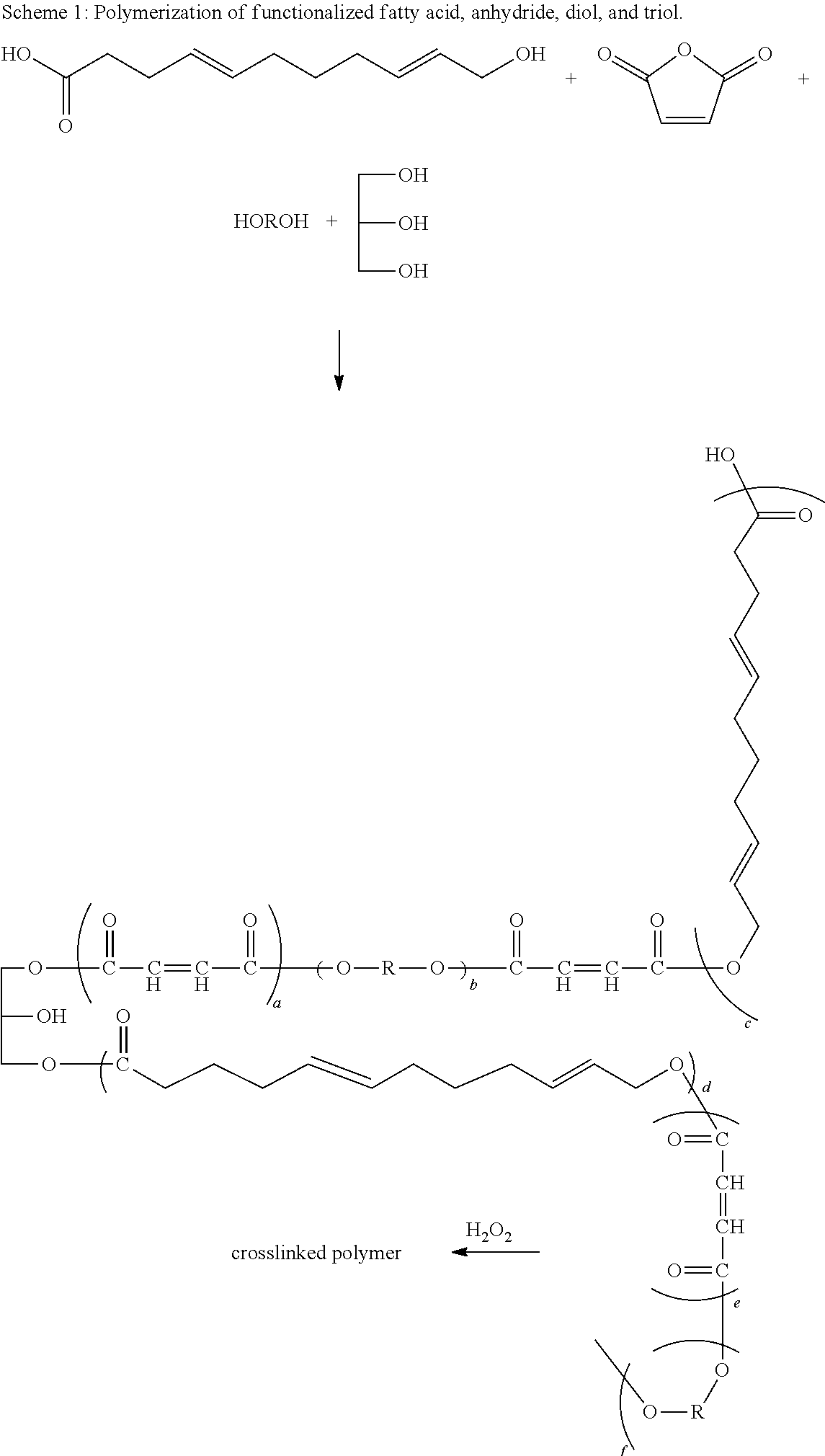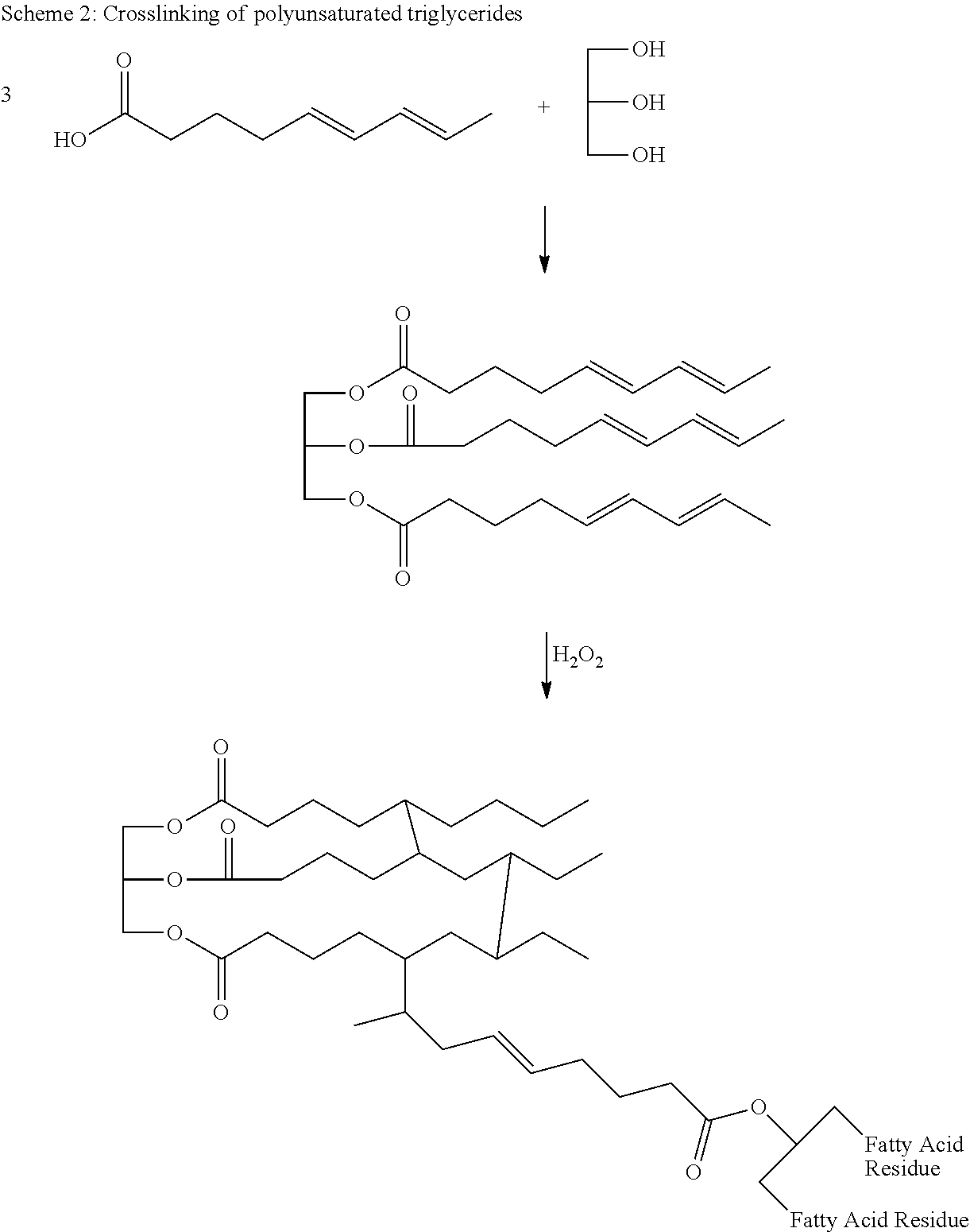Biodegradable chewing gum bases and uses thereof
a gum base and biodegradable technology, applied in chewing gum, packaging, food science and other directions, can solve the problems of brittleness, hard and brittle base, and inability to biodegrade gum base,
- Summary
- Abstract
- Description
- Claims
- Application Information
AI Technical Summary
Benefits of technology
Problems solved by technology
Method used
Image
Examples
Embodiment Construction
I. Definitions
[0014]“Saturated or unsaturated lipid”, as used herein, refers to saturated or unsaturated long chain fatty acids and / or mono, di-, or triglycerides containing at least one additional reactive functional group including, but not limited to, hydroxy groups, amino groups, thiol groups, epoxide groups, carboxylic acid groups, acid derivatives, such as acid chlorides and esters, and double and triple bonds. For example, in one embodiment, the lipid may be a saturated or unsaturated hydroxy fatty acid; amino fatty acid; thiol amino acid; functionalized mono-, di-, or triglyceride, and combinations thereof.
[0015]“Functionalized mono-, di-, or triglyceride”, as used herein refers to a mono-, di-, or triglyceride containing at least two reactive functional groups. In one embodiment, the at least two reactive functional groups are sites of unsaturation, such as an alkene, alkyne, or combinations thereof. In another embodiment, the at least two reactive functional groups are one...
PUM
 Login to View More
Login to View More Abstract
Description
Claims
Application Information
 Login to View More
Login to View More - R&D
- Intellectual Property
- Life Sciences
- Materials
- Tech Scout
- Unparalleled Data Quality
- Higher Quality Content
- 60% Fewer Hallucinations
Browse by: Latest US Patents, China's latest patents, Technical Efficacy Thesaurus, Application Domain, Technology Topic, Popular Technical Reports.
© 2025 PatSnap. All rights reserved.Legal|Privacy policy|Modern Slavery Act Transparency Statement|Sitemap|About US| Contact US: help@patsnap.com



